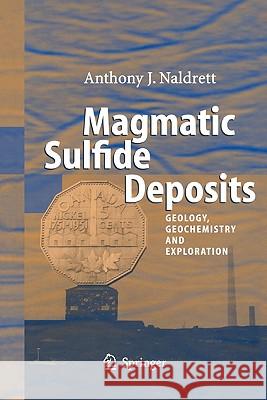Magmatic Sulfide Deposits: Geology, Geochemistry and Exploration » książka
Magmatic Sulfide Deposits: Geology, Geochemistry and Exploration
ISBN-13: 9783642060991 / Angielski / Miękka / 2010 / 728 str.
Magmatic Sulfide Deposits: Geology, Geochemistry and Exploration
ISBN-13: 9783642060991 / Angielski / Miękka / 2010 / 728 str.
(netto: 1152,86 VAT: 5%)
Najniższa cena z 30 dni: 1156,64 zł
ok. 22 dni roboczych
Bez gwarancji dostawy przed świętami
Darmowa dostawa!
PGE V-Voisey's Bay (Canada) D -Duluth Complex (USA) K-Kambalda (Australia) M-Merensky Reef (Bushveld) N -Noril'sk region (Russia) P-Pechenga(Russia) S-Sudbury (Canada) T-Thompson (Canada) J -Jinchuan (China) L-Lac des lies (Canada) PR-Platreef (Bushveld) Po-Portimo Complex (Finland) R-Raglan (Canada) U-UG-2 chromitite (Bushveld) Z-Great Dyke of Zimbabwe e-Mt Keith (Australia) . a. -Perseverance (Australia) +-Stillwater (USA) 0 0 0 'c9 - Ni+Co Cu Relative value of Ni+Co Fig. 1. 1. Relative va1ue of the contributions of Ni+Co, Cu and PGE to the mag matic su1fide deposits listed in Table 1. 1 sulfide deposits are closely related to bodies of mafic or ultramafic rock, and the most convenient way in which to consider them is in terms of the type of magma responsible for the rocks with which they are associated. Typically the type of magma involved bears a close relationship to the tec tonic setting within which it was emplaced. The locations of important deposits, both Ni-Cu dominant and PGE dominant, are shown in Fig. 1. 2. Considering first Ni-Cu deposits, these are further divided into six classes (Table 1. 2) on the basis of their associated magma type. Class NC- 1 (Chap. 3) comprises those related to komatiitic magmatism. Currently known deposits fall into two sub-classes, those related to Archean komatiites ( e. g. the deposits of Western Australia, Zimbabwe and the Abitibi belt of Canada) and those related to Proterozoic komatiites (e. g. those ofthe Raglau and Thompson belts which arebothin Canada)l."











